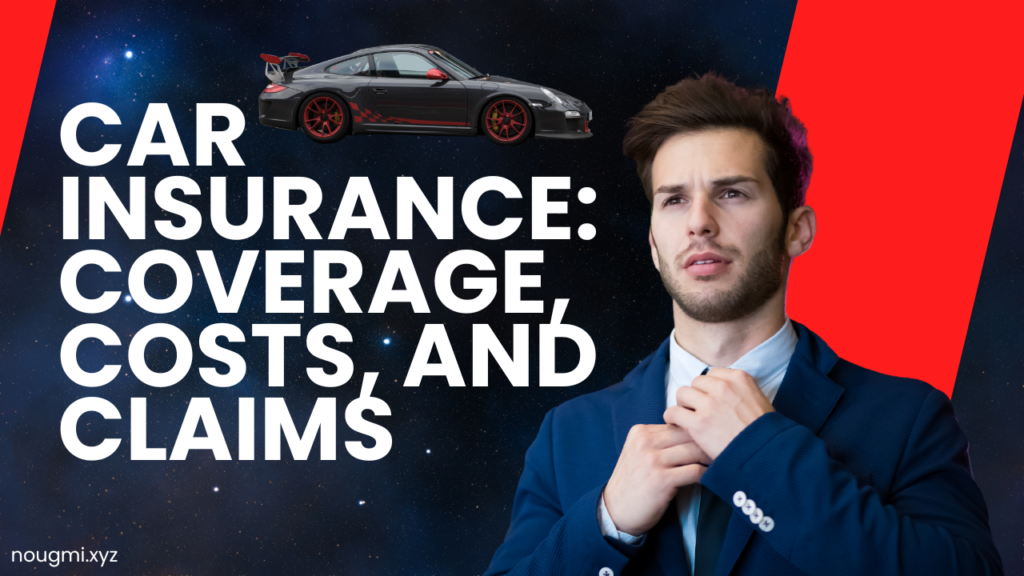Car insurance is a crucial component of responsible vehicle ownership, providing financial protection against potential losses and liabilities. In this comprehensive guide, we will delve into the intricacies of car insurance, including its various types, coverage options, factors affecting premiums, and the claims process. Whether you are a first-time car owner or seeking to update your existing policy, this article will equip you with the knowledge to make informed decisions about your car insurance.
The Basics of Car Insurance
Car insurance is a contract between the vehicle owner and the insurance company, where the insurer agrees to cover specific financial losses arising from car-related incidents in exchange for a premium. These incidents may include accidents, theft, vandalism, natural disasters, and more. The primary purpose of car insurance is to mitigate financial risks and ensure that vehicle owners can recover from unforeseen events without bearing the full financial burden.
Types of Car Insurance Coverage
Car insurance policies typically offer various types of coverage, each addressing different aspects of risk. Understanding these coverages is essential to selecting the right policy for your needs.
1. Liability Coverage: Liability coverage is mandatory in most states and is divided into two parts: bodily injury liability and property damage liability. Bodily injury liability covers medical expenses, lost wages, and legal fees if you are found responsible for injuring someone in an accident. Property damage liability covers the cost of repairing or replacing another person’s property that you damaged in an accident.
2. Collision Coverage: Collision coverage pays for the repair or replacement of your vehicle if it is damaged in a collision, regardless of who is at fault. This coverage is particularly valuable for newer or more expensive vehicles, as it ensures that you can recover the costs of repairing your car.
3. Comprehensive Coverage: Comprehensive coverage protects against non-collision-related damages to your vehicle, such as theft, vandalism, natural disasters, fire, and falling objects. This coverage is essential for safeguarding your car against a wide range of potential threats.
4. Personal Injury Protection (PIP): PIP coverage, also known as no-fault insurance, covers medical expenses, lost wages, and other related costs for you and your passengers, regardless of who is at fault in an accident. PIP is required in some states and optional in others.
5. Uninsured/Underinsured Motorist Coverage: This coverage protects you if you are involved in an accident with a driver who has insufficient or no insurance. It covers medical expenses, lost wages, and other damages that the at-fault driver cannot pay.
6. Medical Payments Coverage: Medical payments coverage, or MedPay, covers medical expenses for you and your passengers after an accident, regardless of fault. It is similar to PIP but does not include lost wages or other non-medical expenses.
Factors Affecting Car Insurance Premiums
Several factors influence the cost of car insurance premiums. Understanding these factors can help you manage your insurance costs and find the best policy for your needs.
1. Driving Record: Your driving history plays a significant role in determining your premium. A clean record with no accidents or traffic violations typically results in lower premiums, while a history of accidents or tickets can increase your rates.
2. Age and Gender: Younger drivers, especially teenagers, generally face higher premiums due to their lack of driving experience and higher risk of accidents. Similarly, male drivers under the age of 25 often pay more for insurance than their female counterparts, as statistics show they are more likely to be involved in accidents.
3. Vehicle Type: The make, model, and year of your vehicle impact your insurance costs. High-performance cars, luxury vehicles, and newer models are more expensive to insure due to their higher repair costs and increased risk of theft.
4. Location: Where you live affects your insurance rates. Urban areas with higher traffic density and crime rates typically result in higher premiums compared to rural areas with less traffic and lower crime rates.
5. Credit Score: Many insurers use credit scores to assess risk. A higher credit score often leads to lower premiums, as insurers believe that individuals with good credit are more likely to manage their risks responsibly.
6. Coverage and Deductibles: The level of coverage you choose and the deductibles you set can significantly impact your premiums. Higher coverage limits and lower deductibles result in higher premiums, while opting for lower coverage and higher deductibles can reduce your costs.
7. Mileage: The number of miles you drive annually affects your premium. Higher mileage increases the likelihood of accidents, leading to higher premiums. Some insurers offer discounts for low-mileage drivers.
Shopping for Car Insurance
Finding the right car insurance policy involves careful consideration of your needs, budget, and available options. Here are some tips to help you shop for car insurance effectively:
1. Compare Multiple Quotes: Obtain quotes from several insurance companies to compare coverage options and premiums. Online comparison tools can simplify this process, allowing you to review multiple quotes side by side.
2. Assess Your Coverage Needs: Evaluate your coverage needs based on factors such as your vehicle’s value, your driving habits, and your financial situation. Consider both mandatory and optional coverages to ensure you are adequately protected.
3. Check for Discounts: Many insurers offer discounts for various reasons, such as safe driving, bundling multiple policies, having anti-theft devices, or being a member of certain organizations. Inquire about available discounts to reduce your premiums.
4. Review Insurer Reputation: Research the reputation and financial stability of the insurance companies you are considering. Read customer reviews, check ratings from independent agencies, and verify the company’s claims handling process.
5. Understand Policy Terms: Carefully read the policy terms and conditions to understand what is covered and what is excluded. Pay attention to limits, deductibles, and any additional endorsements or riders that may be included.
6. Consult an Agent: If you prefer personalized assistance, consider working with an insurance agent. An agent can help you navigate the complexities of car insurance, provide tailored recommendations, and assist with the application process.
The Car Insurance Claims Process
Filing a car insurance claim can be a stressful experience, especially after an accident. Understanding the claims process can help you navigate it more smoothly and ensure that you receive the benefits you are entitled to.
1. Report the Incident: Immediately report the accident or damage to your insurance company. Provide all necessary details, including the date, time, location, and a description of the incident. If applicable, file a police report and obtain a copy for your records.
2. Document the Damage: Take photographs of the damage to your vehicle and any other property involved. Collect contact information from other parties involved in the accident, including witnesses.
3. File the Claim: Submit your claim to the insurance company, either online, over the phone, or through an app. Provide all required documentation, such as the police report, photos, and any medical bills or repair estimates.
4. Work with the Adjuster: An insurance adjuster will be assigned to your claim to assess the damage and determine the payout. Cooperate with the adjuster, provide any additional information requested, and answer their questions honestly.
5. Receive the Settlement: Once the adjuster completes their assessment, the insurance company will offer a settlement based on your policy’s coverage and limits. Review the settlement offer carefully and negotiate if necessary. If you agree to the terms, you will receive the payment to cover the repair or replacement costs.
6. Repair Your Vehicle: Use the settlement funds to repair your vehicle. Choose a reputable repair shop, and keep all receipts and documentation for your records. If the repair costs exceed the settlement amount, discuss your options with the insurance company.
Conclusion
Car insurance is an essential aspect of vehicle ownership, providing financial protection and peace of mind in the event of accidents, theft, or other incidents. By understanding the different types of coverage, factors influencing premiums, and the claims process, you can make informed decisions about your car insurance policy. Whether you are a new driver or an experienced vehicle owner, staying informed and proactive about your car insurance needs will ensure that you are adequately protected on the road.


